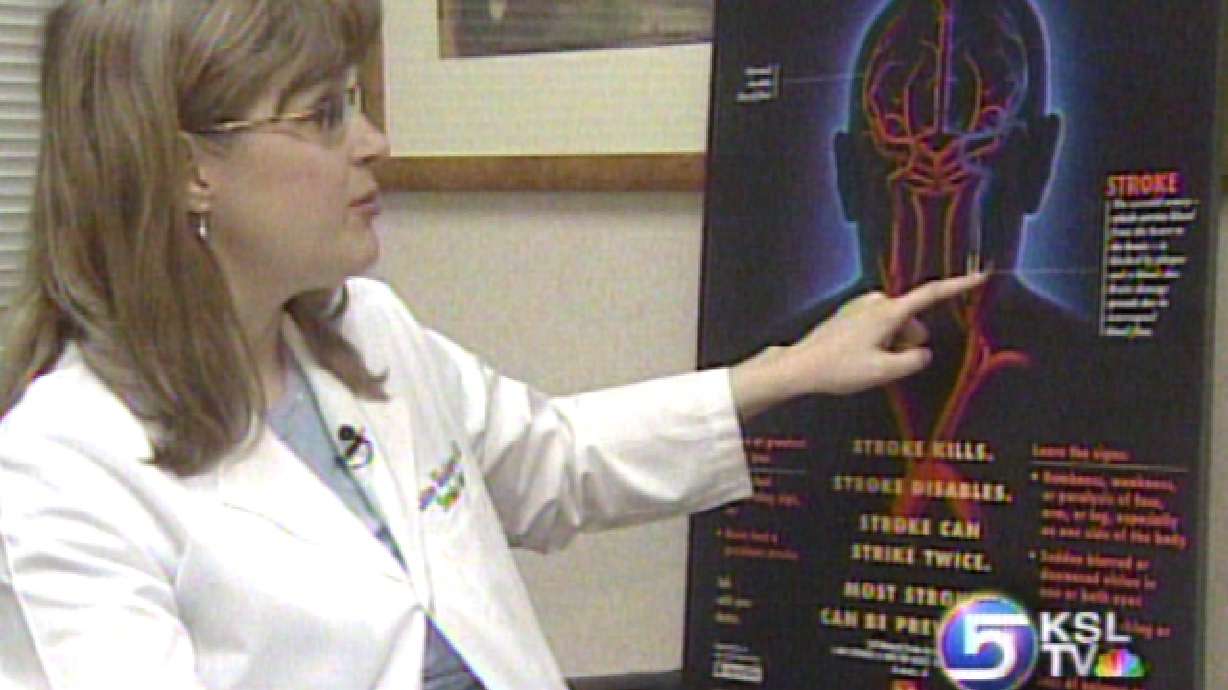Estimated read time: 2-3 minutes
This archived news story is available only for your personal, non-commercial use. Information in the story may be outdated or superseded by additional information. Reading or replaying the story in its archived form does not constitute a republication of the story.
Sammy Linebaugh Reporting A stroke happens when blood is cut off to the brain; the complicated part is recognizing the symptoms. Detection of a stroke the second it happens, by family members, a friend, even somebody at a party, can be a lifesaver.
Dr. Elaine Skalabrin, Dir., University Hospital Stroke Center: "Our window of opportunity from the moment a stroke happens, which is really really sudden, to a lifetime of disability is very very short."
Three hours is that small window of time, says Dr. Elaine Skalabrin, and that's why bystanders make all the difference.
Dr. Skalabrin: "One moment they're talking like normal, the next minute it doesn't make much sense, they can't get their words out, or the words are so slurred you can't understand them."
Skalabrin directs University's hospital's stroke center and says knowing how to recognize stroke symptoms right away is the number one key to preventing permanent disability.
Dr. Skalabrin: "The acronym is FAST, so F that stands for face, you want to look to see if it's drooped. A for arm, you want to see if the arm drags or droops down or won't move on one side. S is for speech, you want to see that the person speaks coherently, makes sense, is understandable. And then T is time."
Clot busting medication can be administered if a stroke victim is treated within three hours of onset, but Dr. Skalabrin says fewer than ten percent of strokes on average nationally are caught in time.
Internally, a person suffering a stroke may feel numbness, tingling on one side, dizziness, or severe headache.
The warning signs to a bystander, again, act "FAST":
- F - Face droops on one side
- A - Arm won't move or drags
- S - Speech is slurred or slow
- T - Time is critical Ask the person to smile - see if the face droops to one side; ask the person to raise their arms; and ask them to speak a coherent sentence. Then, if you detect something's wrong, call 9-1-1 immediately.









